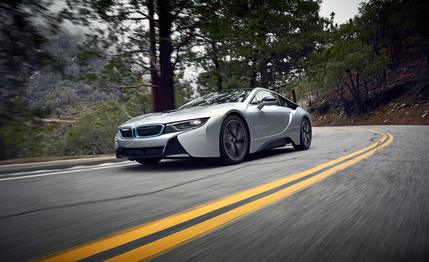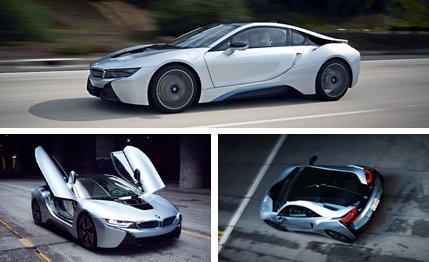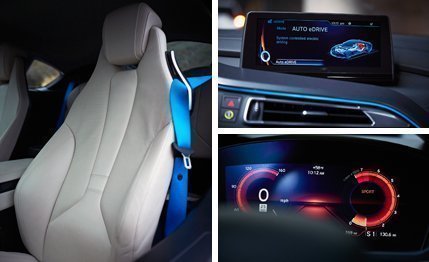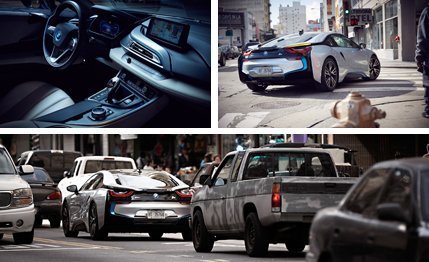
 Instrumented Test
From the March 2015 issue
Instrumented Test
From the March 2015 issue
Los Angeles might have the weather of Eden, but instead of being home to two naked people, there are nearly 4 million here, only some of whom are naked. Those 4 million individuals create traffic so dense and soul-crushing, it gets end-of-times nicknames such as Carmageddon. Traffic never sleeps in the City of Angels. Even the countless planes that are lined up to land at LAX are stuck in traffic. Elevated freeways crisscross the city and ensure that there’s literally traffic on top of traffic. If you enjoy driving and are in something resembling a sports car, it’s perdition. At best, it’s a waste of gas.
Freedom from L.A.’s congestion isn’t far. Just a few miles north of downtown are the San Gabriel Mountains and the desolate road that tattoos the peaks with blacktop. Begun in 1929 but not completed until 1956, the Angeles Crest Highway rides the face of the San Gabriels as it twists through the Angeles National Forest for 66 miles. There’s no better place near L.A. to burn fuel.
But even this road is not immune to commuters, as every weekday morning a stream of cars pours over the mountain and into the city from suburbs in the high desert. But if you’re escaping L.A. in the day’s early hours, nobody will bother you.

 An alien spacecraft adorned with naked porn performers might get more slack-jawed stares than this BMW hybrid. Maybe.
An alien spacecraft adorned with naked porn performers might get more slack-jawed stares than this BMW hybrid. Maybe.
L.A. is famously two-faced, and BMW’s i8 is a car seemingly built for the city’s duality. An electric car when stuck in traffic and a gas-burning supercar on canyon roads such as Angeles Crest, the i8’s styling is even a perfect match for the town. Angelenos love attention-grabbing cars, and the i8 is an instant celebrity. Floating catwalks sprout from the roofline and arc over the rear fenders. From behind, the i8 appears to be a smaller car shedding its skin. From other angles, it has the folded-paper elements of a Frank Gehry building. Dihedral doors hinged at the A-pillars add to the drama but make getting in and out a chore. This is consistent with the Los Angeles mantra that it’s better to look good than to feel good.
Falling inside over the carbon-fiber sill and through the door slits might not be easy, but the leather-filled interior is a comforting place to land. Lighted accents glow at night and the design is futuristic in a Blade Runner way, but there’s nothing here that we haven’t seen on other BMWs. All controls are easy to find, provided you’re familiar with the latest from Munich. Tiny rear seats that even kids would have to squeeze into are seemingly there to lower insurance premiums and to make sure that people see this as a Porsche 911 competitor.
To test the i8’s split personality, we leave downtown L.A. in morning traffic and set the i8 in eDrive mode to make the 15-mile drive to the base of Angeles Crest under electric power. In EV mode, the i8 is hushed. Removing sound and vibration when you’re impeded by commuters brings some peace to the whole experience. The 129-hp motor between the front wheels tugs the i8 along with 184 pound-feet of torque up to 75 mph. A lithium-ion battery pack that looks like a giant Lego block sits between the seats in the carbon-fiber structure. Acceleration in EV mode isn’t quick; 60 mph arrives in 9.2 seconds, but it’s good enough for comfortable use in heavy traffic.

 Right: The two faces of the i8: The green-flag-waving, responsible commuter above and the rip-snorting, red-eyed heathen beneath.
Right: The two faces of the i8: The green-flag-waving, responsible commuter above and the rip-snorting, red-eyed heathen beneath.
As we climb out of town, traffic begins to release its hold. After 13 miles, we’re just short of the entrance to Angeles National Forest before eDrive switches off and we enter comfort mode. In comfort or eco-pro modes, the gas engine switches on and off depending on acceleration demands. If you hit the throttle hard, there is a slight delay before the gas engine comes online.
With Angeles Crest before us, we push the gear selector into sport mode to call upon the full 357 horsepower, changing the character of the i8. In sport, the gauges glow red, a tachometer appears in the cluster, and the 1.5-liter three-cylinder turbo aided by an 11-hp electric motor kicks to life, stays lit, and remains at the ready. If you never plug the i8 in to recharge, keeping the engine in sport mode replenishes the battery pack. Engine sounds, or at least sounds from what we perceive to be the engine, fill the leather-lined cabin. The stereo speakers play a rumbling, intake-rich engine song that mimics an angry Acura NSX and peaks at 87 decibels at full throttle. A rip and a snort accompany each shift of the six-speed automatic. Nothing tells you that this isn’t real. We’re torn; fake shouldn’t be this good. Well, not much in L.A. is real, either, and yet everyone seems so happy.
Hit the stability-control button with the transmission in sport and the car will let you do a launch-control start. Hold both pedals, watch the revs climb to 2500 rpm, release the brake, and the i8 will jump to 60 mph in a more price-appropriate 3.6 seconds. Without launch control activated, the i8 will do the 5-to-60 run in 4.6 seconds.
As long as the three-cylinder is running, the car’s two electric motors, two transmissions, and one engine work together in harmony. There’s no surging, no turbo lag, just uninterrupted, linear thrust. It’s magic when a tiny 1.5-liter eating 22 psi of boost behaves like an engine three times its size. The 3394-pound i8 moves through the quarter-mile in 12.1 seconds at 116 mph. Tinseltown’s other darling, the dual-clutch–equipped Porsche 911 in GT3 guise, weighs 197 pounds less, does 60 in 3.0 seconds, and passes the quarter in 11.2 seconds at 126 mph. Yes, this town does keep score.


Rolling back and forth up the cambered mountain road, the i8 exhibits good balance and lively steering, but narrow 215/45R-20 Bridgestone Potenza S001 front tires start slipping earlier than we expect. On the skidpad, the i8 holds on at 0.93 g, but with Chevy Corvettes and 911s regularly posting 1.00 g, 0.93 doesn’t feel like much grip. Stability born of the long, 110.2-inch wheelbase and the low-slung battery pack makes using the available adhesion a safe exercise. BMW’s tire choice also keeps the i8 from stopping from 70 mph in less than 166 feet.
Lift off the accelerator and the front electric motor generates electricity during deceleration. Pushing the brake pedal adds more regenerative braking; keep pressing and the friction brakes begin to bite. The transition between the electric and disc brakes is abrupt and difficult to modulate smoothly. We prefer Tesla’s strategy of allowing for maximum regeneration when you lift off the accelerator, which frees up the left pedal for actuating the real brakes.
Even after running in sport mode, the i8 manages to return 26 mpg. It might’ve done better if we’d been able to plug in, but BMW didn’t send a charger. Strafing Angeles Crest, though, nearly refills the battery pack, preparing us for the return to congestion.
Like-priced sports cars can’t match the i8’s efficiency, nor do they offer the multiple personalities of the i8. You’d have to look to the Porsche 918 Spyder to find something analogous; while the Porsche far surpasses the performance of the i8, its carbon-fiber structure, hybrid drivetrain, and EV capability make it conceptually similar to this BMW. Think of the $148,250 i8 as the working rich man’s 918 Spyder. In L.A., that’s exactly what it will be.